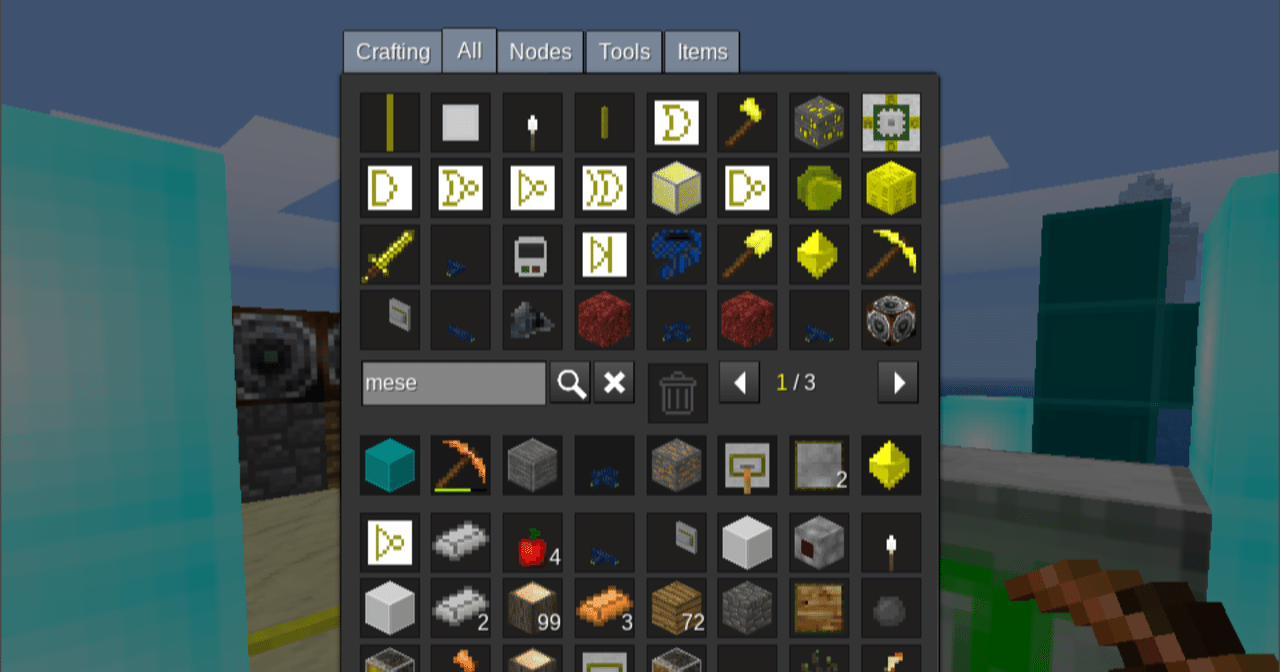

If you place two teleporters on the same axis, when one receives a mesecons signal, it teleports the nearest player on the second (with a maximal distance of 50 nodes by default).

Signal Changer : If it receives a signal on its pin "F", it turns on.Sayer : This node sends a message to every players inside a radius of 8 nodes.Player Killer : This block kills the nearest player (with a maximal distance of 8 blocks by default) (if this player isn't its owner) when it receives a mesecons signal.Just click with it on a luacontroller, then you'll see a formspec. Luacontroller Template Tool : This tool is very useful to manipulate templates with luacontrollers.
#Minetest mesecons code
LuaBlock: This block allows its owner to execute any Lua code in the global environment when turned on.Jammer : If turned on, this node stops mesecons in a radius of 10 nodes.Injector Controller : This node is useful to activate/deactivate a pipeworks filter injector : it sends a blinky signal.Igniter : This node is a lighter that ignites its adjacent flammable nodes (including TNT).To detect a specific dropped item, write its itemstring (for example "default:cobble")). To detect a dropped item, write "_builtin:item". You can choose the entity to detect by right-click (use itemstring, for example "mobs:rat". Entity Detector : You can use it to detect an entity.For example, this is useful for double extenders. At the end of the signal, port 2 turns off immediatly and port 1 turns off 0.4 secondes later. Dual Delayer : If it receives a mesecons signal, port 1 turns on immediatly and port 2 turns on 0.4 seconds later.Conductor Signal Changer : Like a diode which can be activated by sending a signal on its pin "F", and deactivated by sending a signal on its pin "O".Only can be used in the commands, and the admin can change the maximum distance of (default 8 blocks). The admin can change the accepted command (first line of the a), default "tell".

#Minetest mesecons mod
MoreMesecons is a mod for minetest which adds some mesecons items. This is why the solver code creates bool variables for every output of some layer, and then creates appropriate restrictions rather than just saying, for example, `elif b = 2: output = input`.By and the participation of (bugfix), (textures), (texture). there are no diodes blocking flow towards -Z.

P.S.: The statement *"it looks as if for every circuit slice of same Z value, input comes from -Z direction and outputs to +Z direction"*, is false since the circuits are not uni-directional, i.e. Print("data.pickle nonexistent, fallback to parsing.")ĭata = *((height+1)*16) for _ in range((width+1)*16)] # dataīlockdict = `** it is faster that checking "in array".įor rowMinMax in sourcecursorXZ.execute(" SELECT "+ #use compiled regular expression to filter blocks by block content. #for row in sourcecursor.execute(" SELECT "+ #It is possible to get X, Y, Z directly by SQLite! Use ( ) to solve for some input that results in the lamp to turn on.īelow is the parsing + solving code, modified from the ( ). Nevertheless, it gives us a very good POV of how we can analyze the circuit).ģ. Also, it looks as if for every circuit slice of same Z value, input comes from -Z direction and outputs to +Z direction (Strictly speaking, this is false. Note that there are 40 levers (input bits), 1 lamp (output bit), wires & and/or/xor/not gates only at Y=2. Get minetest + mesecons, take a look around the map. The problem solving steps are straightforward.ġ. ```I've stumbled upon this weird minetest map, can you make sense out of it? Minetest + mesecons required Non-standard flag format (enter bits as 0 and 1).```


 0 kommentar(er)
0 kommentar(er)
